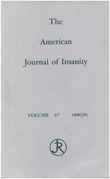Irregular breathing during sleep in patients with panic disorder
Abstract
OBJECTIVE: The authors examined the nocturnal breathing patterns of patients with panic disorder to determine whether these individuals had respiratory irregularities at a time when anxiety was not manifest. METHOD: Respiratory polysomnography was conducted on 14 medication-free patients with panic disorder and 14 healthy comparison subjects. Semiautomated indices of ventilatory variability were calculated for representative 3-minute, artifact-free sleep samples, and manually scored indices of irregular breathing were rated (blind to diagnosis) for the entire last 2 nights of sleep. RESULTS: Patients with panic disorder had evidence of abnormal sleep breathing as indicated by increased irregularity in tidal volume during REM and an increased rate of microapneas (i.e., brief [5-10-second] pauses in breathing). A subgroup of patients (including some with recent sleep panic attacks) had indices of subtle disorders in breathing during sleep that were above the 95th percentile for the comparison subjects. CONCLUSIONS: These findings extend the observations in the awake state that patients with panic disorder breathe more irregularly than healthy comparison subjects. The irregularities may be attributable to altered brainstem sensitivity to CO2 or to other as yet unexplained factors. A possible relationship between irregular nocturnal breathing and sleep panic attacks is discussed.
Access content
To read the fulltext, please use one of the options below to sign in or purchase access.- Personal login
- Institutional Login
- Sign in via OpenAthens
- Register for access
-
Please login/register if you wish to pair your device and check access availability.
Not a subscriber?
PsychiatryOnline subscription options offer access to the DSM-5 library, books, journals, CME, and patient resources. This all-in-one virtual library provides psychiatrists and mental health professionals with key resources for diagnosis, treatment, research, and professional development.
Need more help? PsychiatryOnline Customer Service may be reached by emailing [email protected] or by calling 800-368-5777 (in the U.S.) or 703-907-7322 (outside the U.S.).



